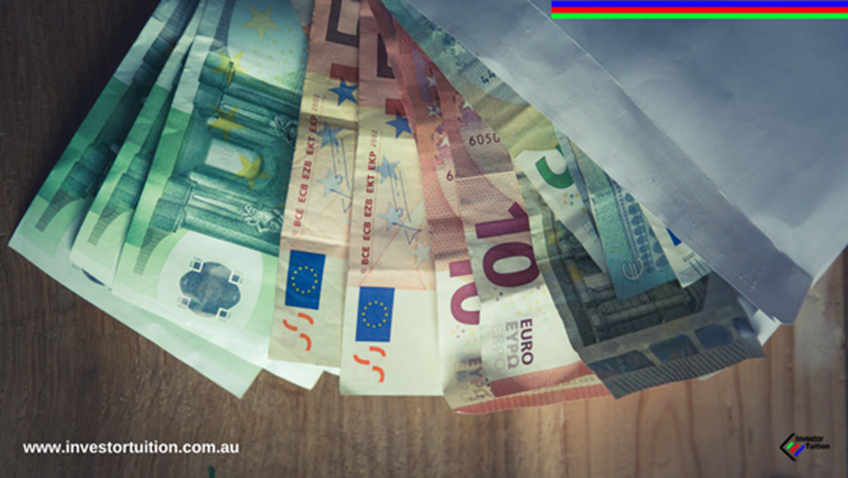There is a difference between saving and investing
To be a successful long-term investor, it is very important to distinguish the difference between the concepts of investing versus that of savings. The most obvious outcome of this understanding is to make sure your funds will be allocated to the appropriate ‘vehicle’.
What is Saving?
Let’s start with savings. Put simply the point of saving is to accumulate the required amount of money to buy something which we want. This can be all manner of things, from a house deposit to a holiday or car, you name it – we save money to enable us to own it.
Saving is a mechanical action of sorts, in that we ‘physically’ allocate a set amount of our disposable income at regular intervals, usually, our pay cycle, to be quarantined from our spending. By its very nature saving is deemed completed when we have accumulated the right amount of cash to buy whatever we wanted when we started the process.
Achieving your goal, however, will also be determined by the ability to stay disciplined along the way as you may ‘stumble’, and fail to put aside the self-promised weekly amount from your salary. This may occur once or regularly as the cost of life interferes with your finite cash flow.
You may even, at times, reassess your needs and decide that the item you so passionately desired is now less important than it was when you began. In these cases, you can stop saving and spend the money as the whim takes us.
This then is the process of saving and I’m sure you’re all very familiar with it.
So what is Investing?
OK, so now let’s look at investing. This is the process of increasing your overall wealth by choosing to place accumulated (or borrowed funds) into assets chosen for their ability to increase in value and offer an income stream. By the way, we won’t split hairs in this discussion about the absolute re- quirement of an income stream, as there are certainly growth assets that do not give income e.g. gold, but for our current purpose let us stay with both elements.
Investing differs greatly from saving as it depends solely on the investment asset to do the ‘heavy lifting’ to make increased wealth. So rather than the incremental cash contributions of saving you need asset growth. And therefore over time, your capital value will increase with both intrinsic growth and inflation. Additionally, you can also use the income stream to either fund new assets, support borrowings for more assets, or to augment the original investment.
The sole purpose of investing is the creation of wealth. Ideally, you’re striving to have more capital over a certain period than what you started with. Importantly, this is the primary and only goal of investing.
Warren Buffett famously has two rules for investing.
Rule 1 Never lose money
Rule 2 Always refer to rule 1
But on the other hand, savings disappears once the target is reached as it is exchanged for the de- sired product or service.

Do you need this information?
You better believe you need this information. A great many people have in the past, lost a great deal of money because of their inability to define whether they were saving or investing. And it is all be- cause they selected the wrong product to carry out their desires. Sometimes (a lot of times!) advisers have also muddied the ‘waters’ in this regard by advising ‘savings’ clients, investment products – mmmm tsk tsk, but that’s another story.
Over the years I have witnessed many instances of people eschewing low-interest savings products, in favour of higher rates of return offered by an investment. And then hammered by one of the many unavoidable risk attributes of investing. Put simply, investing always carries risk, whereas sav- ings should not.
In previous discussions, I have talked about the need to understand the concept of the higher the risk the higher the expected return. The process of choosing the right vehicle for your funds is exactly where to apply use phrases innate wisdom.
Is there a rule?
There sure is, and here it is.
Savings should only ever be assigned to safe, readily accessible and consequently low rates of re- turn products.
Remember you trade-off possible returns to avoid risk. The only goal is to have all the money saved at the end. As a result, savers should always opt for the risk-free rate of return in lieu of any other product. This means that bank accounts and bank deposits are the right (and only) way to go.
Recall earlier in this discussion when defining’ saving’ we stated that it is ‘an accumulation of regular contributions’ and this is the only method to guarantee you’ll meet your goal. It is not the in- vestment return that achieves your goal.
Unfortunately, this is where people can be misled into unsuitable investment products. Risk-free rates are always the lowest on offer, obviously, and in the current times, they are at historical lows.
When climbing mountains, you need to select the right equipment
A much higher rate of return can be a very tempting offer to someone who is saving for something. And, depending on the prevailing investment climate it is often done without considering the asso- ciated risks.
When you move from risk-free there are many negative events that can impact your investment returns.
Major economic events Government legislation alterations Technology
Consumer habits changing
There’s plenty more I’m afraid! I have a post about the investment environment so check it out to learn a bit more about what you will be up against. And here is one about risk, that you will also find very interesting- click here
The most obvious outcome of any of these events is the reduction of our investment capital. This could be just a few dollars or all the way down to wiping out your entire investment. It just depends on the investment you have chosen and the event that occurs.
For Example
Just before the GFC, the economic environment was ‘supercharged’ with possibilities. Every asset group was making money. Shares, particularly resources were booming, interest rates were around 6 to 8 percent and there was huge growth in property.
There was certainly plenty of investment choice and institutions through their advice networks be- came a convenient gateway into a huge array of managed investments.
There was no shortage of investments that were packaged as ‘safe’ alternatives to bank deposits, but with higher returns. Sadly greed seems to take over from better judgment, and people flocked to the likes of mezzanine finance schemes, income trusts, property trusts etc.
The advertising message and the optimistic times both contributed to feelings of no- risk, although all were offering returns higher than the risk-free bank rate. ( Warning, warning) What could possibly go wrong! Well you know the story, bang, the Global Financial Crisis hits, and everything, and I do mean everything, crashed.
Lot’s of the presumed safe property investments, mortgage funds, and mezzanine finance schemes all came unstuck. In fact, some of the managed funds are still frozen to this day (2017) with only partial returns to investors. What was thought couldn’t happen, did happen.
As an adviser, I was in a position to see the havoc the GFC caused. And a lot of the pain and misery that customers had, could have been easily avoided by just understanding the difference between saving and investing. If they had understood this, their choices would have been much different.

So there you have it. If you are saving for the purpose of buying something, anything, at some time in the future, no matter when always use the risk-free investment option. Just accept that the low- interest rate will more than compensates you for the safety of your money.
This applies even when the share market is moving up like there is no tomorrow. And even when your friends are telling you how much money they’re making from their share investments. Always remember, savings are savings and investments are always going to be investments.
And now you know the difference between saving and investing.

